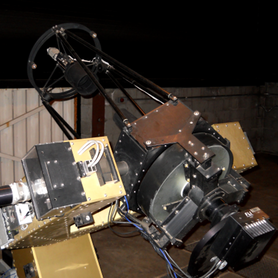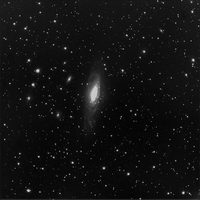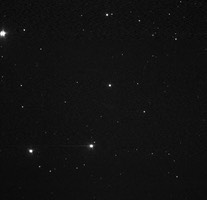

Discuss each question with your team. Be prepared to explain the reasoning behind your team's answers after the quiz.
1. When looking at objects in the night sky, which direction has the least amount of interference from the atmosphere/light pollution?
- Toward the Horizon, facing South
- Toward the Horizon, facing North
- It depends where you are on Earth
- Straight up toward the zenith
2. When will a given object be at its greatest altitude in the sky relative to wherever you are observing it?
- When it reaches the zenith
- When it crosses the local meridian
- When its right ascension is at 12 hours
- At midnight
3. How is local sidereal time defined?
- It is equal to the sun's right ascension on the ecliptic.
- It is the difference between the Earth's prime meridian and the celestial sphere prime meridian.
- It is equal to the right ascension of stars that are currently crossing the local meridian.
- It is equal to the right ascension of stars that are just rising.
4. Compared to a star with an apparent magnitude of 6, a star with an apparent magnitude of 9 is
- brighter
- dimmer
- more massive
- less massive
5. Which of these would be a good object to look for with a telescope from Iowa at midnight in June?
- The Orion Nebula (RA = 05h 35 m dec= -05 degrees)
- The Large Magellanic Cloud (RA =05h 23m dec= -69 deg)
- Venus
- Messier 57 (The Ring Nebula) (RA= 18h 53m dec= +33)
6. The images below were both taken with the Rigel telescope. If the target objects in the center of each image are both the same apparent magnitude, for which would you want to use a longer exposure time?
- The left-hand image
- The right-hand image
- both, to get as much light as possible
- neither, the exposure time is irrelevant

